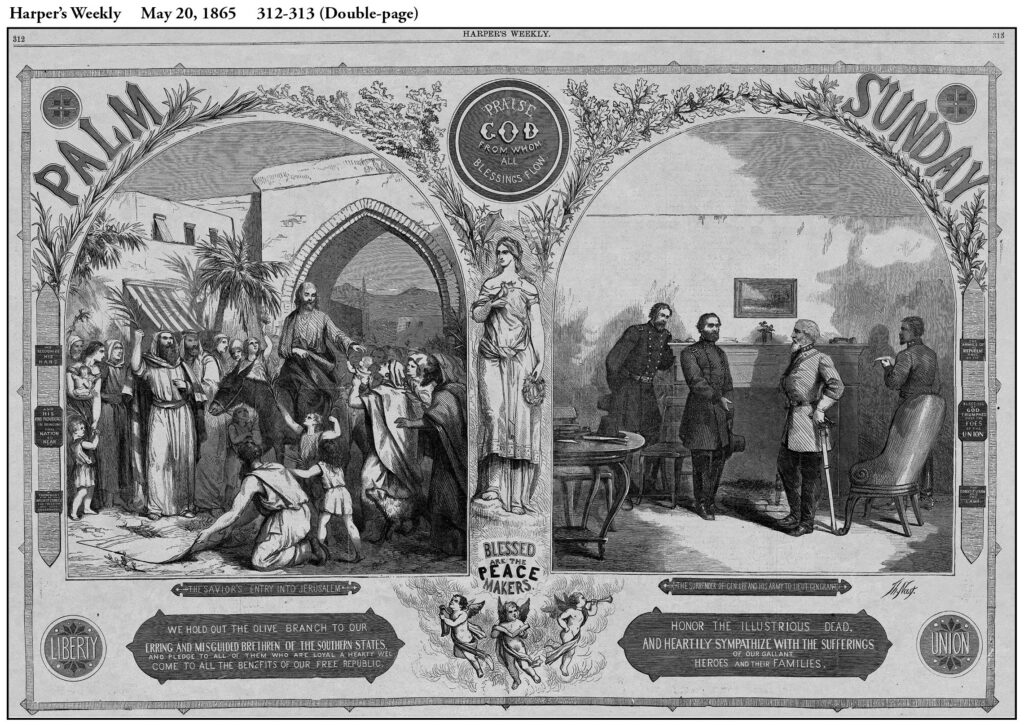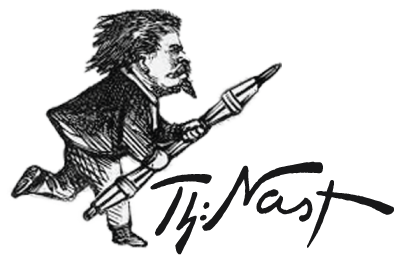
Harper’s Weekly – May 20, 1865
The first half of April 1865 was dominated by two “A” news events — Appomattox and Assassination — separated by only five days. The second story so overwhelmed the first that neither Harper’s Weekly or Frank Leslie’s Illustrated Newspaper gave General Robert E. Lee’s surrender to General Ulysses Grant anywhere near the attention it merited.
After Richmond fell, Lee continued to suffer losses. After an exchange of correspondence with Grant, Lee surrendered to him on Sunday, April 9 in the home of Wilmer McLean in Appomattox Court House (the name of the village).
There were no reporters, artists or photographers in McLean’s parlor to record the historic event. Lee, accompanied only by his aide, Colonel Charles Marshall, was in full dress uniform. Grant, whose better clothes were in a wagon far in the rear, wore a private’s blouse, along with mud-splattered boots and trousers.
For its April 22 issue which went to press before Lincoln died, the Weekly’s Domestic Intelligence column had all of four-plus inches of small type devoted to the “Surrender of Lee’s Army.” That was its total coverage of the war’s climactic event for the next half year — except for Nast who was the only artist to depict the surrender scene on a reasonably current timetable.
Finally, in the May 20 issue of Harper’s Weekly — available in print about a month after the event — Nast’s illustration appeared as part of an allegorical Palm Sunday cartoon. (Figuratively associating Lincoln’s martyrdom with Christ’s — both on Good Friday — was not unusual at the time.)
Nast probably had incomplete knowledge of who else was in the room with Grant, so he balanced his scenario with just Grant — wearing a dress coat and shined boots — and General John Rawlins. Rawlins, who was about six-feet-five, towered over everybody even though he wasn’t standing straight. However, Grant who was four inches shorter than Lee’s six feet, was drawn an inch or so taller than the “Rebel General,” as Harper’s frequently referred to him. (Probably, this was Nast’s intentional enhancement of his hero.)
